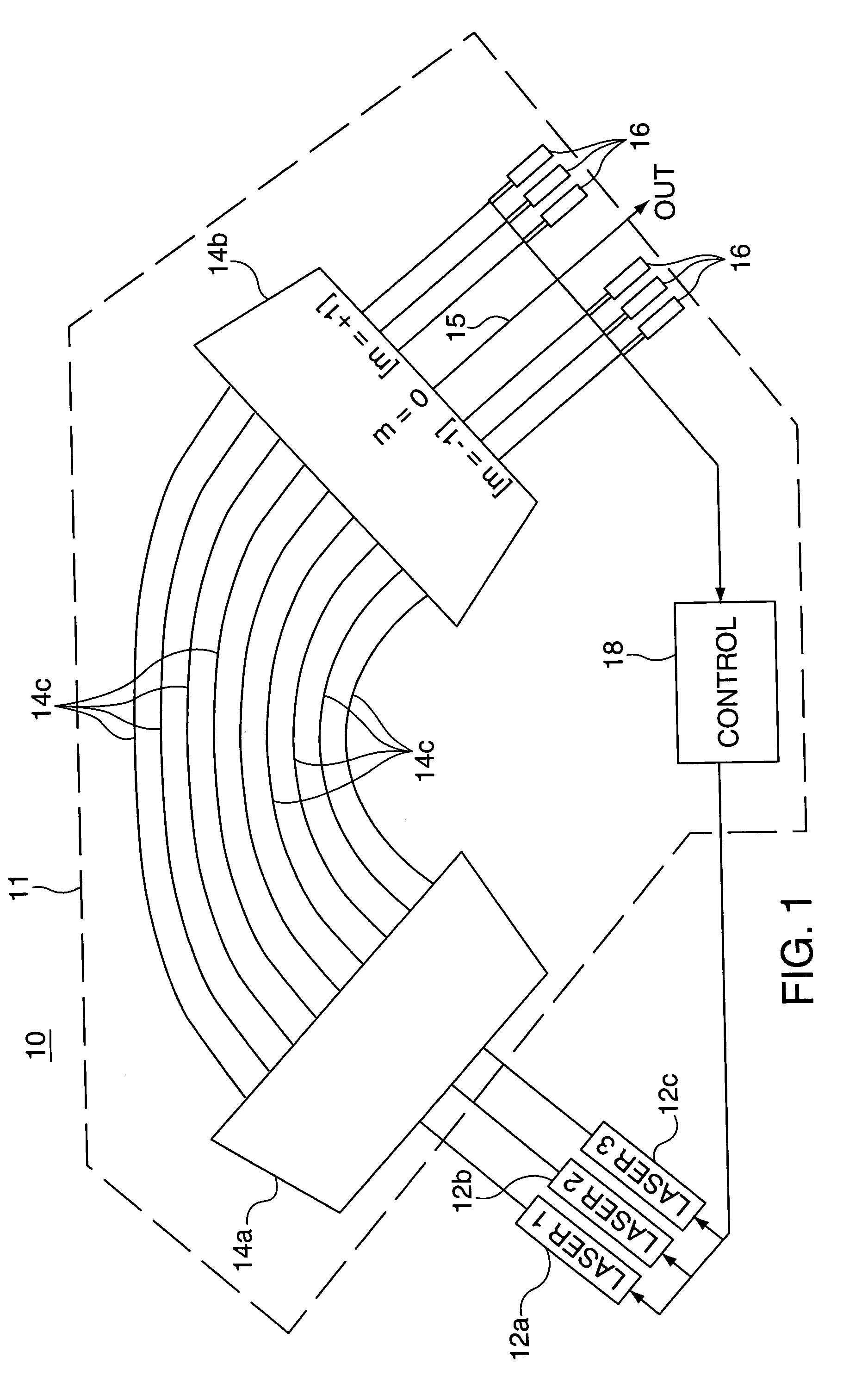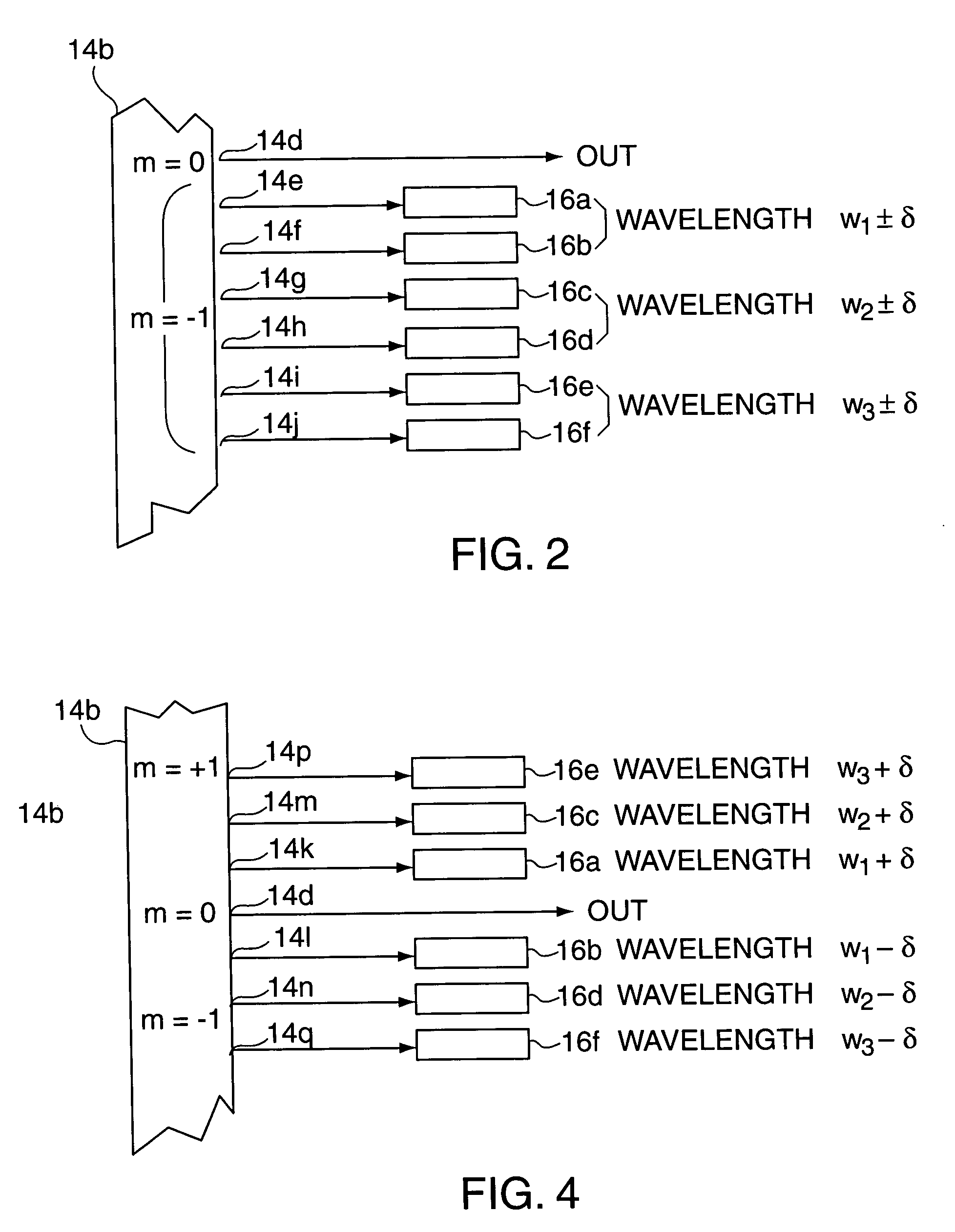Combination wavelength multiplexer and wavelength stabilizer
- Summary
- Abstract
- Description
- Claims
- Application Information
AI Technical Summary
Benefits of technology
Problems solved by technology
Method used
Image
Examples
first embodiment
[0020]Referring now to FIG. 1, there is shown a general schematic diagram of a transmitter 10 including a plurality of radiation sources (LASER 1, LASER 2, LASER 3) 12a, 12b, and 12c and an optical wavelength locking arrangement (hereinafter wavelocker) 11 (shown within a dashed line area) in accordance with the present invention. The wavelocker 11 comprises a first Free Propagation Region (FPR) 14a, a second FPR 14b, an array waveguide section 14c formed from a plurality of different predetermined length waveguides, a plurality of either single or pairs of radiation detectors 16, and a control device 18. The radiation sources are shown as lasers 12a (LASER 1), 12b (LASER 2), and 12c (LASER 3). Each of the plurality of lasers 12a, 12b, and 12c are arranged to generate an output signal with a different predetermined wavelength. The output wavelength signals from the lasers 12a, 12b, and 12c are coupled to separate appropriate inputs of the first FPR 14a. The first and second FPRs 14a...
second embodiment
[0032]Referring now to FIG. 7, there is shown a schematic diagram of a transmitter 40 comprising a plurality of radiation sources (LASER 1, LASER 2, LASER 3) (of which exemplary lasers 42a, 42b, and 42c are shown), and an exemplary optical wavelength locking arrangement (hereinafter wavelocker) 41 (shown within a dashed line area) in accordance with the present invention. The wavelocker 41 comprises a first Free Propagation Region (FPR) 44a, a second FPR 44b, an optical grating section formed from a plurality of different length waveguides 44c, a plurality of radiation detectors 46a, 46b, 46c, 46d, 46e, and 46f, a feedback loop 47 (shown as a dashed line), and a control device 48. Each of the plurality of lasers 42a, 42b, and 42c are arranged to generate a different predetermined wavelength output signal. The arrangement of the wavelocker 41 is especially useful when densely spaced output wavelength channels are generated by the lasers 42a, 42b, and 42c. The densely spaced output wa...
PUM
 Login to View More
Login to View More Abstract
Description
Claims
Application Information
 Login to View More
Login to View More - R&D
- Intellectual Property
- Life Sciences
- Materials
- Tech Scout
- Unparalleled Data Quality
- Higher Quality Content
- 60% Fewer Hallucinations
Browse by: Latest US Patents, China's latest patents, Technical Efficacy Thesaurus, Application Domain, Technology Topic, Popular Technical Reports.
© 2025 PatSnap. All rights reserved.Legal|Privacy policy|Modern Slavery Act Transparency Statement|Sitemap|About US| Contact US: help@patsnap.com



